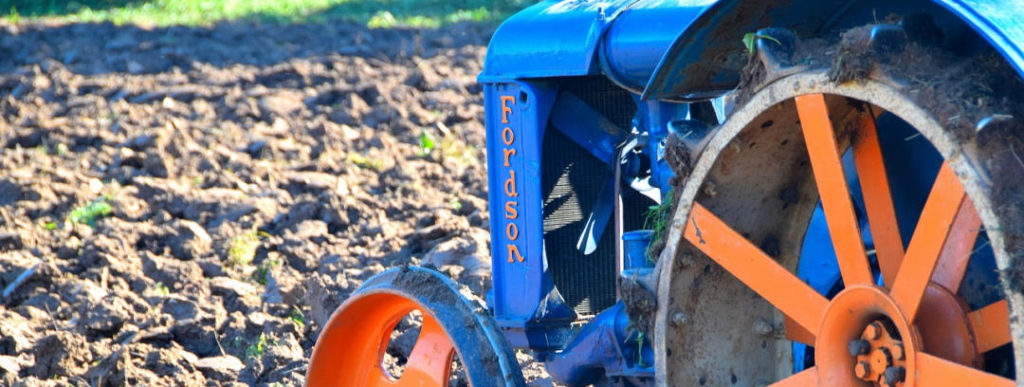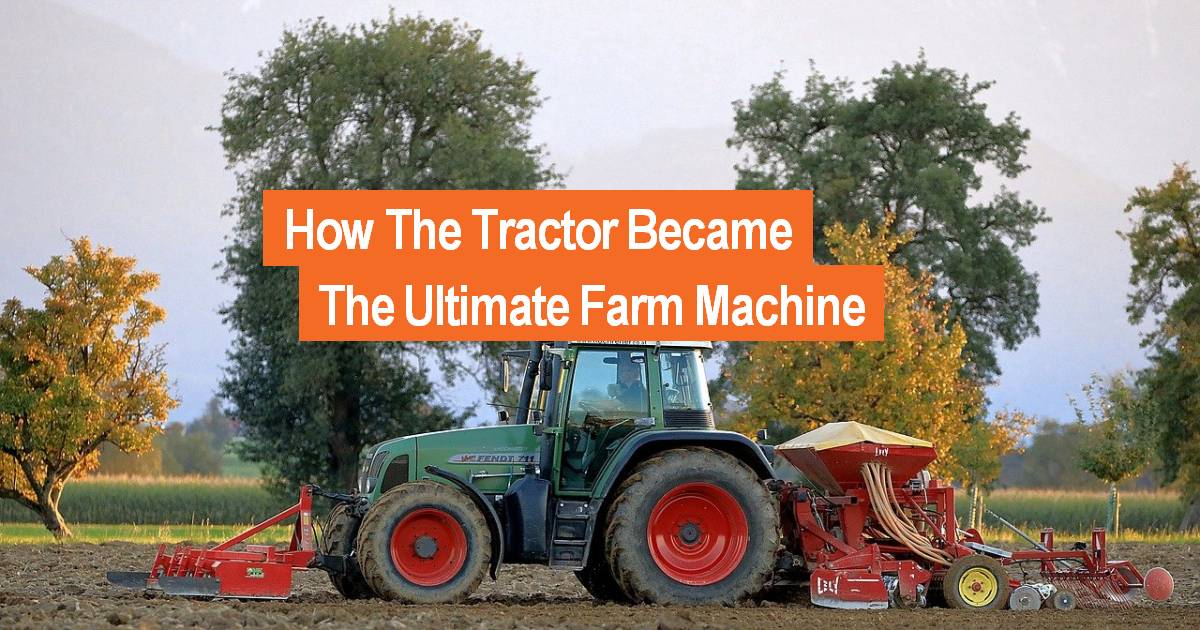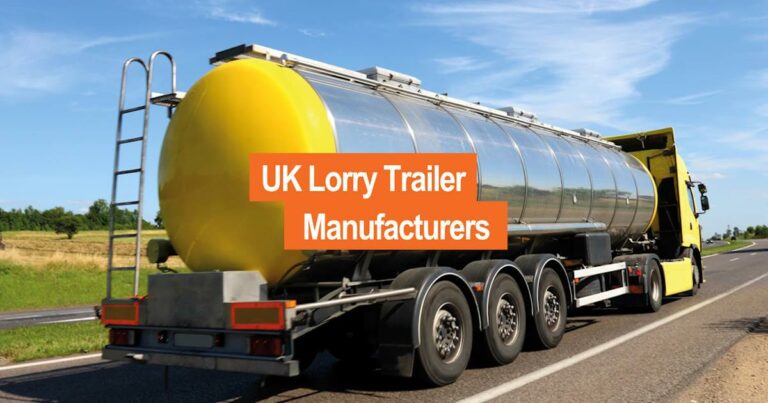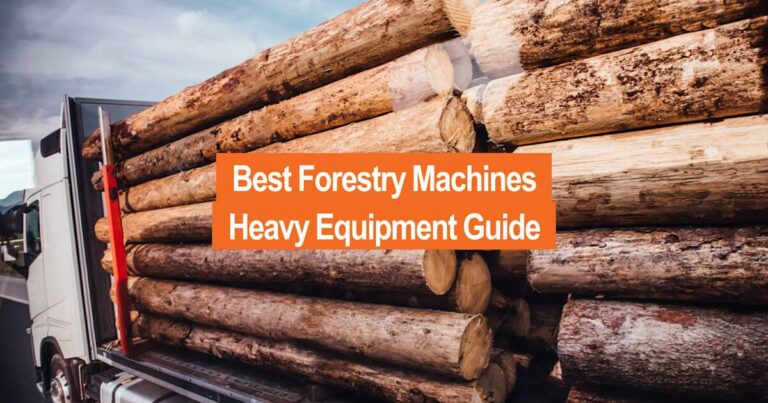Farming has come a long way from individual plots and homesteads to the mass-production agricultural industry we know today. Nothing represents that journey, as well as the tractor.
It’s an iconic symbol of farming and one of the most essential pieces of farming equipment. Almost every farm, no matter what it produces, requires a tractor at some point.
But the sleek, well-designed machines that we see today have some very humble roots. We’ve traced the history of the tractor back to the beginning.
In The Beginning
Before the introduction of machinery, all farm work was carried out by hand or using literal horsepower. For example, ploughs were pulled by horses and pushed manually, with seeding was done by hand.
However, at the end of the 1800s everything began to change.
The first recognisable tractor can be traced back to 1868. The engine was powered by steam and it had a top speed of five kilometers per hour.
Although the first model was not particularly successful, the potential for machines in farming was clear. In the early 1890s, a man by the name of John Froelich created the first fuel-powered tractor.
At the time, it wasn’t called a tractor and no one knew what Froelich had created. After testing the machine on his own farm using it to help with the harvest, Froelich presented his creation to some businessmen who saw how successful the machine could become.
The Waterloo Gasoline Traction Engine Company started manufacturing Froelich’s design immediately. It became known as a tractor, and at the time, each machine weighed around 15 tons.
Unfortunately only two were sold, and both were returned!
The Farm Tractor Takes Off

While the first model may not have been a success, the need for such a farming machine was evident.
Tractor design changed slowly in the year’s following Froelich’s invention. It wasn’t until the First World War and the need for heavy machinery that things started to gather pace. The man behind the tractor’s sudden development was none other than Henry Ford himself of the Ford Motor Company.
Ford saw a gap in the market for a simple tractor for ordinary farmers. Ford created the Fordson tractor, the first lightweight mass-produced tractor in history.
With more tractors on farms, each farmer could plant more seeds, cover more ground and increase the number of products. Tractors instantly became vital for increased yields and productivity.
Just as Ford started producing tractors in the US, other companies such as Renault also started producing tractor-style machines to aid the war effort in Europe. Renault produced its first “tracked vehicle” called the FT tank in the last years of the First World War.
The company used this experience to start producing agricultural tractors. In the 100 years since the first tractor, Renault has made 400 different models. The tractor division has now been consumed into the well-know German CLAAS brand which we see on many farms today.
Some Competition For Ford
Throughout the war, Ford had a monopoly on tractors both in the US and worldwide by exporting tractors. So much so, around 25,000 Fordson tractors made it to the Soviet Union in the 1920s.
Then the Waterloo Gasoline Engine Company, which originally manufactured Froelich’s design, was bought by a company well-known for making ploughs and tools.
What was that company’s name? John Deere.
John Deere was actually founded in 1804 but didn’t venture into tractors until after the First World War. Initially John Deere continued to sell the waterloo company’s Waterloo Boy tractors.
However in 1923, they launched the first tractor under the John Deere name and in the distinctive green and yellow colours – the John Deere Model D. It was a two-cylinder kerosene, standard-tread tractor which had a “massive” 15 horsepower!
This model continued to be produced until 1953, making it the longest running design of John Deere tractor.
In 1949, John Deere launched the first diesel-powered tractor to achieve over 40 horsepower.
The new design also featured rubber tires rather than steel wheels, giving the tractor more traction in wet conditions. The 1940s also saw the introduction of features such as two-clutch power control, single hitch points, and power-shift wheels.
In the 1950s, a new player entered the game in the form of a merger between Canada’s Massey-Harris and the UK’s Ferguson Company. The resulting Massey Ferguson is still a well-known name.
Massey-Harris had been making tractors on a small scale in the 1940s, mainly for military operations. But the merger brought new technology and new finance for tractor development.
In 1957 the first tractor under the Massey Ferguson name, the MF35, rolled out in time for Christmas. It was a hit globally and sold in the UK, Australia and the US.
With worldwide sales from manufacturer such as Massey Ferguson, John Deere and Ford, tractors became widely-used around the world and are often considered as the original and “ultimate” farm machine.
Modern Day Tractors

The tractor, as we know it today, first took shape in the 1960s.
No longer needed during the war, manufacturers could focus on operator comfort and producing multi-purpose agricultural tractors.
Four-wheel drive suddenly arrived, as did cabs to protect drivers and also driving accessories required for driving on the road.
It was during 1959/60s that tractors became subject to safety requirements to protect drivers from harm (such as rollover and impact from flying objects). This led to tractors being governed by modern health and safety laws, and as a result, they became less distinctive as they all had to meet the same rules.
The new rules also created new problems.
The addition of the cab surprisingly meant drivers became exposed to more noise, and new legislation was introduced in 1976, to stipulate how much noise (90dB) was acceptable.
The result was a standard seat position and cab design. From this development, the layout of controls and instruments became somewhat standard. And of course, this all improved operator efficiency.
With tractors remaining such a crucial part of farming, more and more companies have launched competing models. John Deere, Massey Ferguson, and Ford are all still popular brands. However, new brands such as New Holland Agriculture, Fendt, Valtra, and Lamborghini, mean tractors are always changing with new designs and upgrades common.
Tractors Of The Future – Electric & Driverless Tractors
While technology is continuously changing and developing, the tractor’s basic shape and purpose has remained unchanged over the last 150 years.
Tractors are still a significant part of agricultural processes, with almost 14,000 tractors registered on UK farms – and the numbers are still rising.
In recent years, electric engines (motors) have started to become more popular in smaller tractors which are not used to pull large heavy weights. While electric motors are more efficient in terms of running costs, they do not yet match the greater horsepower provided by more common diesel engines.
The next step for tractors is likely to be the most significant change to the design of tractors since their concept: removing the driver.
Driverless tractors are almost a reality and will be the biggest difference from the original tractor designs. Just as the original tractors massively increased productivity, driverless tractors of the future will do the same for modern day farmers.
Days spent tilling fields, planting new crops and harvesting produce can now be done without human supervision.
Whilst a driverless tractor pulls a plough, at the same time the farmer can be preparing the seeds. The time saved will increase productivity in a leap that hasn’t been seen since tractors were invented.
So while other machines are being replaced or made defunct – the tractor has not only held its place as a necessary farming machine, it is well-placed to continue into the future.
Buying New & Used Tractors
These new tractors have required a massive investment from the manufacturers, and as such, they don’t come as cheap as older models.
Back in the 1920s, a farmer in need of a tractor had very few options other than traditional bank loans. Luckily in 2020 (and beyond), farmers have numerous of options for financing the purchase of the next generation of tractors.
Specialist tractor finance brokers, such as Evangate FS, can help arrange loans, hire purchase agreements or lease deals for farmers. The unique elements, is that these finance options also factor in the time it takes for a harvest to come to fruition.
And if you are considering purchasing a slightly “less new” tractor (circa 10 years old) to replace your old workhorse, then an agriculture specialist broker is a must. Why? You will be unable to get a manufacturers “new purchase” finance deal and high street banks are less willing to lend for used tractors.
In summary, if the history of the tractor is any indication, the iconic machine will still be found on most UK farms 100 years from now…




